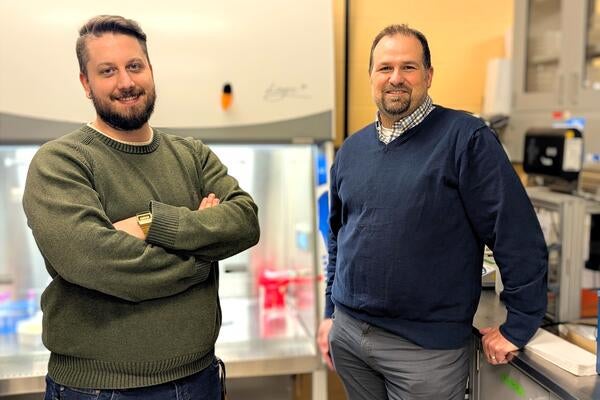
Helping doctors manage COVID-19
New tool uses AI technology to assess the severity of lung infections and inform treatment

New tool uses AI technology to assess the severity of lung infections and inform treatment
By Brian Caldwell Faculty of EngineeringArtificial intelligence (AI) technology developed by researchers at Waterloo Engineering is capable of assessing the severity of COVID-19 cases with a promising degree of accuracy.
The new work, part of the COVID-Net open-source initiative launched more than a year ago, involved researchers from Waterloo and spin-off startup company DarwinAI, as well as radiologists at the Stony Brook School of Medicine and the Montefiore Medical Center in New York.
Deep-learning AI was trained to analyze the extent and opacity of infection in the lungs of COVID-19 patients based on chest x-rays. Its scores were then compared to assessments of the same x-rays by expert radiologists.
For both extent and opacity, important indicators of the severity of infections, predictions made by the AI software were in good alignment with scores provided by the human experts.
Alexander Wong, a systems design engineering professor and co-founder of DarwinAI, said the technology could give doctors an important tool to help them manage cases.
"Assessing the severity of a patient with COVID-19 is a critical step in the clinical workflow for determining the best course of action for treatment and care, be it admitting the patient to ICU, giving a patient oxygen therapy, or putting a patient on a mechanical ventilator," he said.
"The promising results in this study show that artificial intelligence has a strong potential to be an effective tool for supporting frontline healthcare workers in their decisions and improving clinical efficiency, which is especially important given how much stress the ongoing pandemic has placed on healthcare systems around the world."
A paper on the research, Towards computer-aided severity assessment via deep neural networks for geographic and opacity extent scoring of SARS-CoV-2 chest X-rays, appears in the journal Scientific Reports.
Photo: Chest x-rays used in the COVID-Net study show differing infection extent and opacity in the lungs of COVID-19 patients.

Engineering master's student Nayeema Nonta (left), one of the three paper authors, and her supervisor, Dr. Sirisha Rambhatla, in a large server room with the computer power needed to develop their new LLM training technique. (University of Waterloo)
Read more
Waterloo researchers develop highly efficient AI training system that paves the way for cheaper, greener “intelligent partners”

Read more
Engineering researchers team up to tackle the plastics pollution problem with microbial innovation and engineering design

Read more
15 University of Waterloo researchers have been named to the annual Highly Cited Researchers™ list for significant contributions to their specific fields of research
The University of Waterloo acknowledges that much of our work takes place on the traditional territory of the Neutral, Anishinaabeg, and Haudenosaunee peoples. Our main campus is situated on the Haldimand Tract, the land granted to the Six Nations that includes six miles on each side of the Grand River. Our active work toward reconciliation takes place across our campuses through research, learning, teaching, and community building, and is co-ordinated within the Office of Indigenous Relations.